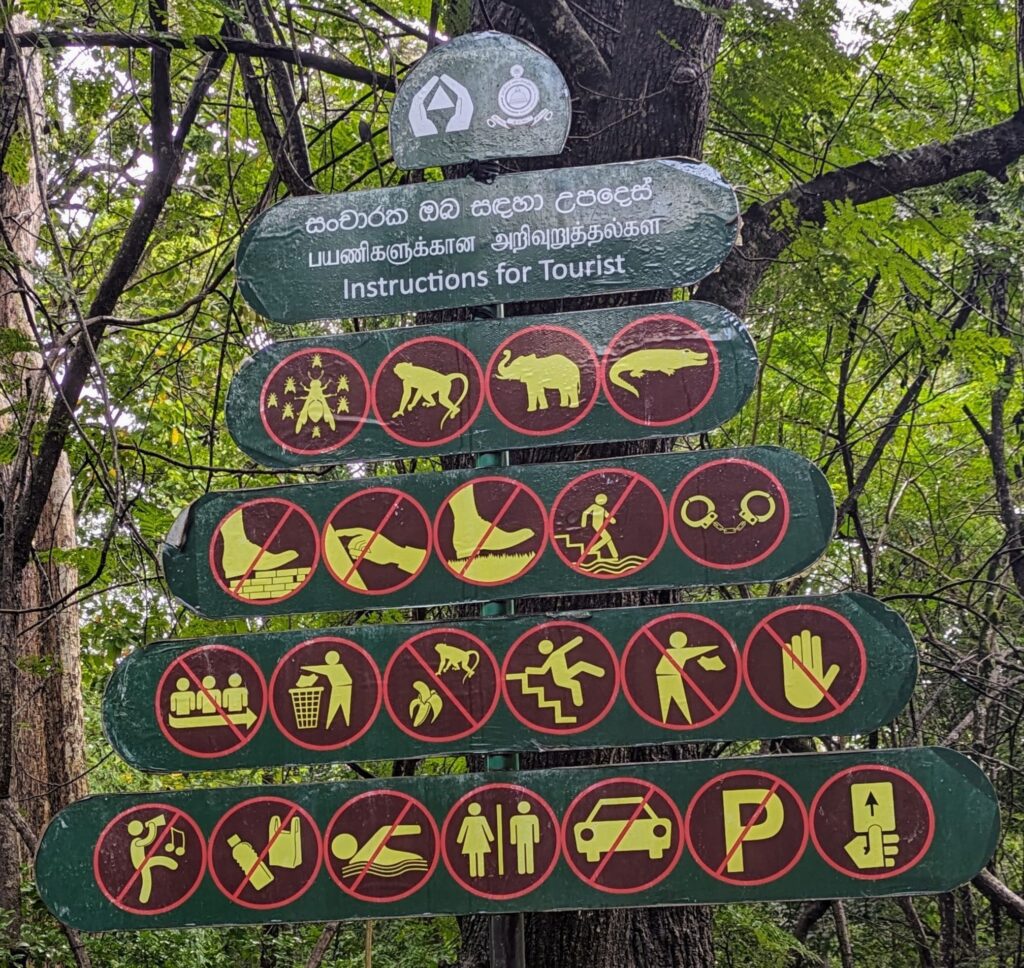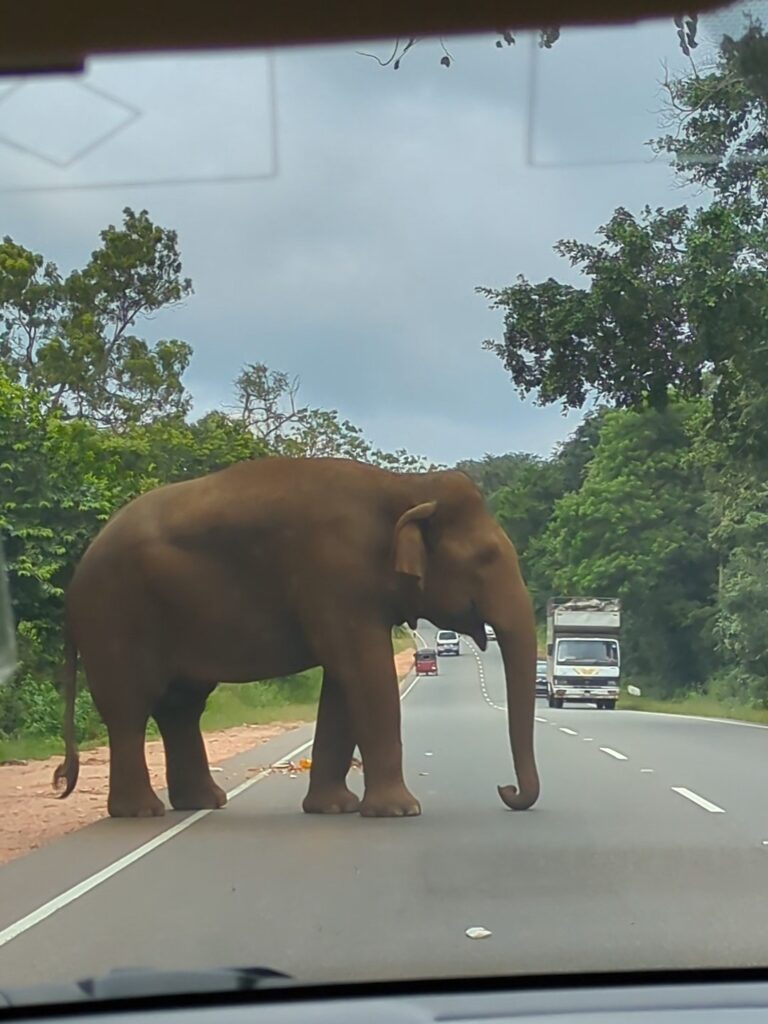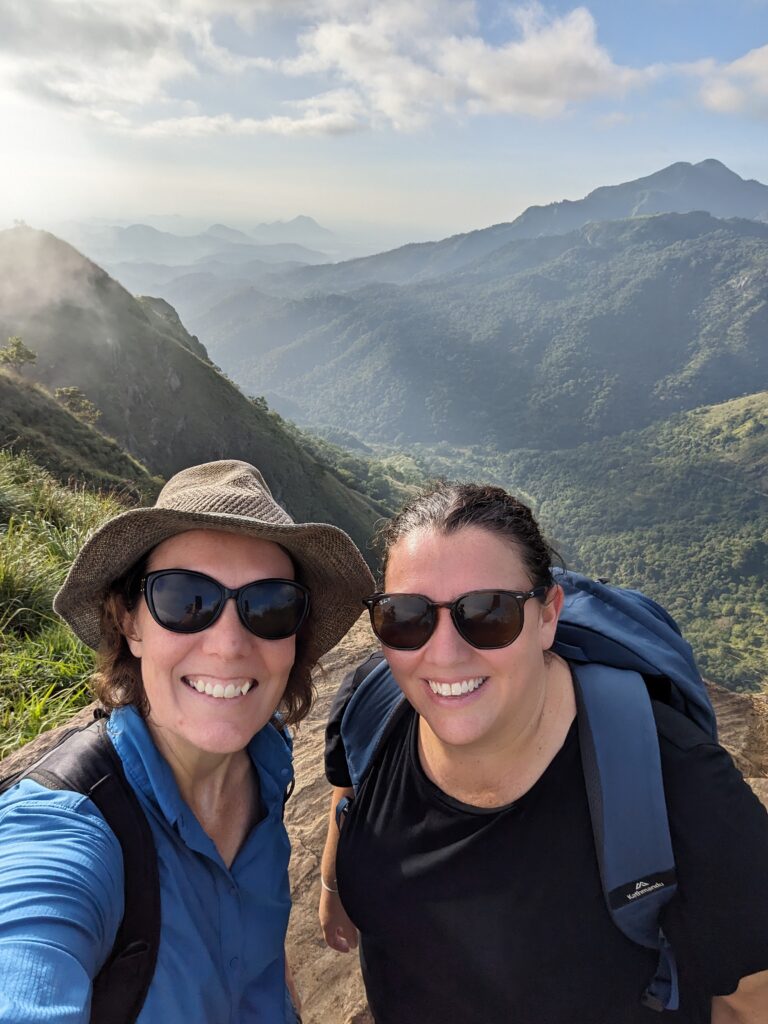Image: Mountain Goat at Little Adam’s Peak
11 January 2024
Post 3 of 3
With its spectacular views, stunning scenery and colourful landscapes, Sri Lanka is a destination for all kinds of tourists which makes tourism a growing sector of the struggling economy. In the tourist hot spots, we were flabbergasted by the number of hotels, resorts and tourist activities being built in a hurry next door to each other to win the tourist dollar. Sri Lanka’s foreign debt is enormous, the Chinese continue to fund large infrastructure projects and the politicians tend to look after themselves. Many of the middle-class people we spoke to were saving to send their children to university in Canada, Australia or England with the hope that the children would eventually gain citizenship in that country and be able to bring their parents over. The general outlook was that the current government has the potential to get better, but no one is expecting much.
On a chirpier note, the food in Sri Lanka is fantastic. I had curry and rice every day, and sometimes for every meal. Vegetarian curries are generally vegetable curry rather than lentil or chickpea, so I had bean curry, okra curry, plantain curry, pumpkin curry, potato curry, carrot curry and more. My favourite was the eggplant curry in all its varieties with the Brinjol Moju winning out easily. I had coconut sambol every day and discovered a tasty local parsley – gotu kola sambol. We had lots of crab and lots of chicken; sampled the black pork curry; had river fish and ocean fish; oysters, prawns and calamari; a variety of hoppers, coconut pancakes and rice; and oodles of fresh fruit. We were climbing mountains occasionally so our consumption was offset somewhat.
Monkeys can be quite a pest in Sri Lanka, stealing food from plates in restaurants and breaking into hotel rooms and eating anything edible, including shampoo. Silly tourists buy bags of bananas to feed the monkeys at the tourist spots with some tourists going so far as to peel the bananas for the monkeys! At one restaurant, we were shown a shotgun on the table next to us and were told to use it if the monkeys came to steal food…
As always, I enjoyed the signage on my travels. A Tuk-tuk was “Insured for Reality”. “Frog Porridge” was on the menu. Signs on the freeways said “Danger Peacocks Ahead”. At the beach “When you don’t use the right place for garbage drop, then you cannot avoid garbage piling up in your life”. But the winner is “Mystery Meat Restaurant”. Here are some others.
We had expected to see locals playing cricket throughout our trip, but realised the hilly landscape didn’t afford a lot of opportunities for cricket pitches. While visiting a Hindu temple in Matale on the outskirts of Kandy, Mountain Goat spotted a painting on the ceiling with a cricket ball sitting under the paws of 6 gold lions – obviously an important spiritual symbol despite volleyball being Sri Lanka’s official national sport. Once in Galle, we came across budding cricketers in every empty car park and green space, with locals and tourists acting as umpires.
Sri Lanka has a lot of affordable accommodation options with amazing views. The main criteria I used in booking our accommodation was location, breakfast, cost and view. Total cost for the two of us for 2 weeks was A$600. We enjoyed views of the beach, mountains, jungles, lakes and rivers from our beds or balconies. A good view really adds to the magic of a holiday!
Sri Lanka consistently offers up amazing views whether you’re in bed or not. The inter-monsoon meant we had sunshine and storms daily, with the mood of the day reflected in the clouds and waterways we travelled past. We took a ridiculous amount of photos and (mostly) enjoyed watching in bewilderment at travellers hanging off bridges, out of trains and off cliff edges trying to get the perfect photo for the socials. Instagram has a big influence on the destinations tourists visit in Sri Lanka, with places like the Nine Arch Bridge seeing a steady increase in tourist numbers since being “discovered on Instagram” in around 2015. The nearby town Ella has gone from a sleepy hilltop town to a bustling, commercial tourist centre to service the busloads of tourists that arrive daily.
Elephants are native to Sri Lanka, and are considered endangered with the population today estimated to be between 3000 and 5000. Most live in the National Parks where you can see them if you do a guided safari, however there are still many elephants that are wild in Sri Lanka. Development and farming are encroaching on elephant habitats, leading to elephants searching for food and water closer to villages, and farmers protecting their families and crops with high-voltage electric fencing, poison baits and guns. To add to the stress, National Parks sometimes have busy roads running through them, so elephants can be crossing the road at any time.
We finished our stay in Sri Lanka with a few nights by the beach at Mirissa on the south coast. There are small cemeteries dotted along the entire coast in memory of those killed in the 2004 Boxing Day tsunami – approximately 35,000 people died in Sri Lanka, and over 20,000 were injured. House frames and land parcels are left to be reclaimed by nature as there is no one left alive who has ownership rights to that land. Sadly, government funds are not sufficient to repair and rebuild the damaged areas, nor to fix the broken tsunami alert system.
Private business is booming with huge hotels being erected on the coastline and tourist venues covering every inch of beachfront. We were overwhelmed by the number of Russian tourists occupying the beaches, particularly around Unawatuna, escaping their winter and war. We saw hundreds of shades of pink skin as crowds of white tourists roamed the streets in their swimwear having spent way too long in the sun. The beaches were generally busy, noisy and steamy, and the water was very warm with large floaty waves.
We did a whale-watching tour and got to see a Blue Whale and a mother and calf Fin Whale, and were lucky to swim with a turtle. We spent our last few days watching the waves, weather and tourists. We enjoyed curries and crab, and caught up with friends we’d made along the trip. We weren’t ready to go home but we did.




















Got very curious about “gotu kola sambol” and have never heard of Pennywort – but I shall be on the lookout now. The National Park rules is quite a lot to digest.
The views from the room are lovely, especially the one in Ella, and the pictures of you two with the mountains is really lovely! I am stunned that you saw a Blue Whale (wow!) I do always enjoy your unique perspective so am looking forward to your next adventure.